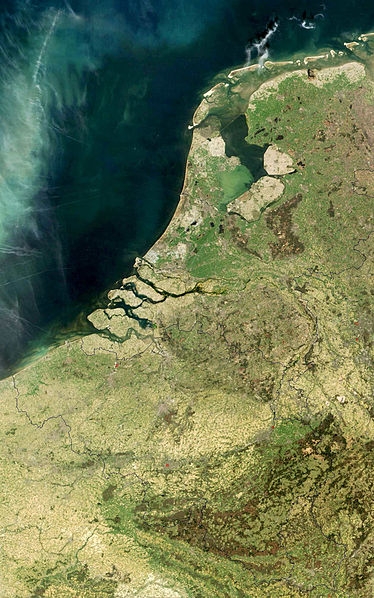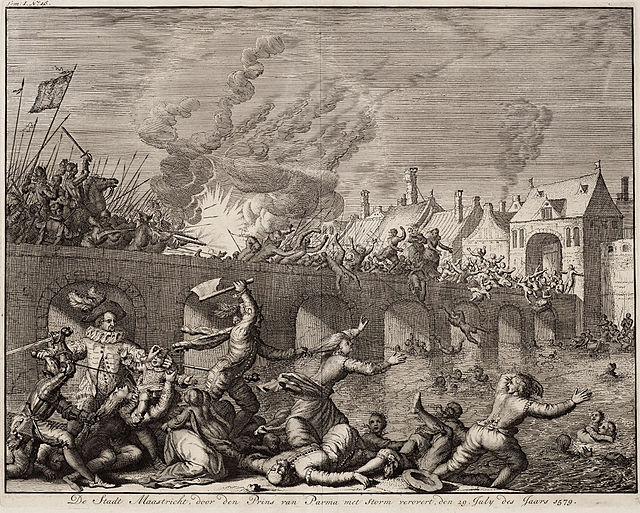The Seventeen Provinces were the Imperial states of the Habsburg Netherlands in the 16th century. They roughly covered the Low Countries, i.e., what is now the Netherlands, Belgium, Luxembourg, and most of the French departments of Nord and Pas-de-Calais (Artois). Also within this area were semi-independent fiefdoms, mainly ecclesiastical ones, such as Liège, Cambrai and Stavelot-Malmedy.
Coats of Arms of the Seventeen Provinces
The Triumph of Death (c. 1562) by Pieter Brueghel the Elder reflects the increasingly harsh treatment the Seventeen Provinces received in the 16th century
The European region known as the Low Countries, historically also known as the Netherlands or Belgica, is a coastal lowland region in Northwestern Europe forming the lower basin of the Rhine–Meuse–Scheldt delta and consisting today of the three modern "Benelux" countries: Belgium, Luxembourg, and the Netherlands – which English and French give the same name as the traditional regional name. Geographically and historically, the area also includes parts of France and Germany such as French Flanders and the German regions of East Frisia and Cleves. During the Middle Ages, the Low Countries were divided into numerous semi-independent principalities.
The Low Countries as seen from space
Jan van Eyck, The Arnolfini Portrait, 1434, National Gallery, London
Sack of Maastricht by the Tercios de Flandes (Flemish Regiments) in 1579
Siege and capture of Tournai (1581)






